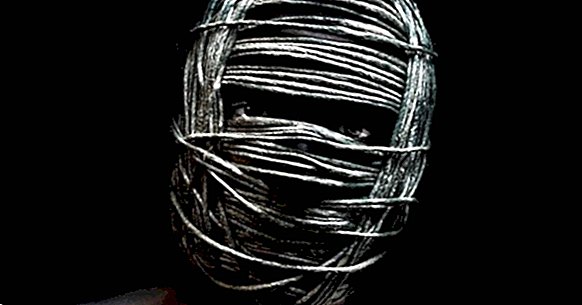Twilight state: what it is, symptoms and causes
Epileptic disorders, brain injuries due to any cause or the abuse of substances such as alcohol can cause the appearance of twilight states, characterized by narrowing of the field of consciousness and the presence of automatic and involuntary movements.
In this article we will describe what is the twilight state and what are its symptoms and its causes most common We will dwell especially on the associations between this phenomenon and broader psychological disorders, as well as on its two most typical observable signs: automatisms and drives.
- Related article: "The 6 levels of loss of consciousness and associated disorders"
What is the twilight state?
Twilight states are transient alterations of alertness, attention and awareness . It is associated with sensations of mental confusion, temporospatial disorientation, decreased sensory reactivity, amnesia of episodes, and impulsive and automatic behaviors. However, there is no obtundation of consciousness.
The alteration of consciousness characteristic of crepuscular states can have a very different degree in each case. In addition, the different areas that make up consciousness are not affected in an equivalent way, but each attentional function can present more or less significant alterations.
These phenomena generally appear in broader contexts; in this sense they are especially relevant epileptic disorders and the abuse of certain types of substances . Thus, the set of symptoms that we call "twilight state" is mainly due to brain alterations, whether these are temporary or chronic.
In general, crepuscular states have a sudden onset and end, and usually last several hours; It is not uncommon for them to lengthen for days. Its intensity may vary depending on the severity of the brain changes that cause the symptoms. The person does not usually remember the episode once it has ended.
- Maybe you're interested: "Types of brain waves: Delta, Theta, Alpha, Beta and Gamma"
Narrowing the field of consciousness
The twilight state falls within the category of alterations by narrowing the field of consciousness , which are characterized by the dissociation between observable behavior and cognitive phenomena: the flow of thoughts and perceptions is interrupted but the behavior continues to have a more or less normal appearance.
However, in these types of disorders, of which crepuscular states are the most representative example, the behavior has an automatic character. This is manifested in the appearance of automatisms (continuations of the movements prior to the episode) and impulsions, which lead to ambulation.
In the alterations by narrowing of the field of consciousness there is a decrease in the level of brain alertness, and therefore in the capacity of attention. As a result, disorientation appears, both spatial and temporal, and amnesia of the episode occurs once it has finished . Sensory reactivity is maintained in part.
Main symptoms: automatisms and drives
Automations and drives are the main signs of the twilight state and of the alterations by narrowing of the conscience in general. It is about the clearest manifestations of the affectation of the conscience and of the automatic conducts that define this type of phenomena.
The term "automatism" refers to episodes of motor activity that occur with a decreased level of consciousness , and therefore have an automatic and involuntary nature. The coordination of the movements is more or less satisfactory, although the narrowing of the conscience is usually evident to the observers.
The most common automatisms involve manual gestures, walking movements, facial expressions (those of perplexity and fear are very characteristic) or words and other sounds. The masticatory automatisms are especially frequent. In general, these phenomena reproduce the behavior that the person executed before the episode.
Drives are less common than automatisms . These are impulsive behaviors that do not derive from a cognitive and voluntary basis, and the most common is ambulation, which consists of the person walking aimlessly for a long period of time, sometimes throughout the entire episode.
Causes of the twilight state
The typical cause of twilight states are epileptic seizures, which occur as a result of alterations in the electrical activity of the brain. In this sense we can associate the term to the crises of great evil, and in particular the epileptic aura , that is, the set of symptoms and signs that precede the seizures in these cases.
Another common cause of the twilight state is intoxication by psychoactive substances. A type of twilight state to which special attention has been devoted is the alcoholic variant, in which the combination between one of these episodes and the consumption of alcohol, even if it is in small quantities, can provoke very aggressive behaviors.
Injuries and brain alterations of other types, in addition to those that are typical of epilepsy, also sometimes cause alterations due to narrowing of the field of consciousness. In this sense we can highlight the ictal crepuscular states, during which the ambulation impulses are very frequent .
In the literature relating to the twilight state its association with other phenomena is also mentioned: schizophrenia, somnambulism and hysteria are perhaps the most relevant. However, there is not much information regarding the differential characteristics of the twilight state in these psychopathological contexts.
Concluding
The twilight state is a mental disorder that affects true psychological processes that, due to their complexity, make this phenomenon complicated to deal with. Epilepsy in general, the altered states of consciousness due to the consumption of substances, and the brain injuries and everything that they entail, trigger processes that involve many parts of the brain, and its effect propagates affecting many groups of neurons, so that It is very difficult to locate what is the root of what happens in cases of twilight state.
Therefore, it is necessary that scientific research continue to progress to know the main cause of this phenomenon and to be able to remedy it.



















